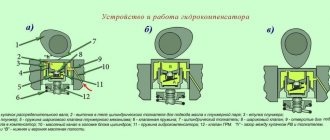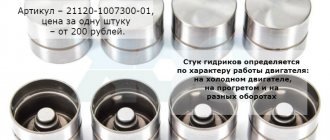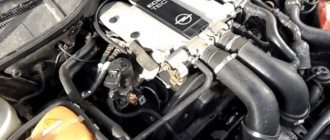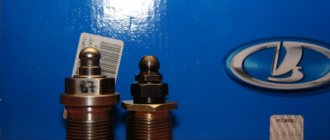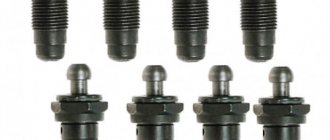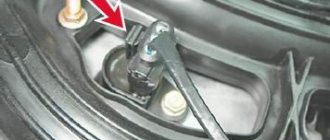Any experienced car enthusiast knows how important the gas distribution system, abbreviated as timing, is in a car. Its task is to supply air to the cylinders, where a working mixture is created to start and operate the engine. After the mixture burns out, exhaust gases are formed, which must be removed from the system, and here the timing belt also plays a decisive role.
For the correct operation of the timing belt, reliable operation of the hydraulic compensators is important. These devices are responsible for opening and closing the air intake valves. Moreover, they are responsible for opening the valves to a strictly defined amount, no more and no less.
If the hydraulic compensators break down, the gap size will be disrupted, which will lead to a phase failure of the gas distribution system. A car enthusiast can detect a problem by a characteristic knocking sound, which often causes panic even for experienced drivers. Today we’ll talk about how hydraulic compensators are replaced on a Priora with a 1.6 engine with 16 valves with or without air conditioning.
Why are hydraulic compensators needed on the VAZ 2170 Priora
A design element of a modern engine is designed to automatically adjust the valve position. The part allows you to eliminate the manual calibration procedure every 10,000 km, which makes car maintenance easier and helps increase the power of the power plant.
The design and principle of operation of hydraulic compensators on the Lada Priora
Structurally, the hydraulic compensator on Priora looks like a metal cylinder with a spring and a shut-off valve. Inside the part there are two smaller sleeves. The operating principle of the system is based on oil pressure in the plunger. When the pusher cam leaves, the cavity inside the hydraulic valve is filled with oil. At the end of the cycle, the container is completely filled and the cam begins to push the entire structure down (open the valve). In this case, the main valve pusher rests on the part and lowers it. The opening depth is adjusted by changing the pressure of the liquid entering under the plunger mechanism.
The knocking noise of the engine does not go away or appears after warming up
Much more dangerous is the knocking of hydraulic compensators, which appears as it warms up or only intensifies as the power unit reaches operating temperatures. In this case, the hydraulic compensators constantly knock at idle speed of a warm engine; the knock may be present under load, etc. The list of causes for this malfunction is wider than knocking noises on a cold internal combustion engine.
First, you need to make sure that it is the hydraulic compensators that are knocking when hot, since there are many reasons for knocking in the engine. To do this, you need to know how to identify a knocking hydraulic compensator. It is also important to be able to determine which hydraulic compensator is knocking, which will help more accurately localize the fault.
Note that the knocking of compensators has a characteristic sound. The pitch is high, the knock is loud, reminiscent of a metal ball striking another metal part, and is localized under the valve cover. Can be easily heard with a stethoscope. If the main valve knocks constantly, then it may soon become completely jammed or other breakdowns will occur. In such a situation, the engine needs repair; it is possible to replace the hydraulic compensators. In some cases, the seat of the hydraulic compensator is also broken. After the motor heats up, thermal expansion of the parts occurs, and the hydraulic fluid begins to “dangle” at the installation site and knock. A more accurate determination of a knocking main engine is possible after partially disassembling the motor and removing the cover.
As already mentioned, on a cold engine, contamination of the channels can cause knocking, after which the extraneous sound disappears as it warms up. In the case of a hot internal combustion engine, exactly the opposite happens, when, parallel to the increase in temperature, the deposits in the channel soften and shift, completely blocking the supply of lubricant to the main fluid chamber. In this case, it is also recommended to flush the hydraulic compensators and lubrication system, change the engine oil, or clean the engine after disassembling it.
The oil filter should be checked, which may be the cause of insufficient pressure in the lubrication system and, as a result, knocking of the engine when hot. If there is insufficient pressure in the hydraulic compensators, an air lock is created. The oil level in the engine also deserves special attention, which should not be lower or higher than normal (oil overflow into the engine). It should be noted that when cold, at low speeds and problems with the oil level, the HA may not knock. After the engine warms up, the amount of air in the oil increases and a knocking sound from the hydraulic compensators appears, as the oil and air become a compressible mixture. It is also advisable to check the operation of the oil pump and measure the pressure in the lubrication system if problems with the hydraulic fluid appear on a hot engine.
Why are hydraulic compensators knocking on a Priora with 16 valves?
A knocking sound during operation of parts appears when the supply of emulsion to the plunger is reduced and the pusher does not move evenly. The causes of the characteristic sound can be the following factors:
- Wear or low quality lubricant. The correct operation of the mechanism depends on engine oil. The technical clearances in the plunger are minimal, which requires the use of a high-quality consumable.
- Clogged fluid lines.
- Natural aging of parts. Main engines are designed for 100,000 km. Moreover, if the machine is operated in difficult conditions, the service life is reduced by 15-20%.
Malfunctions and their causes
As mentioned above, the design of hydraulic compensators is extremely simple. But even such simple parts fail. There are three main signs that indicate that something is wrong with the hydraulic compensators:
- While the engine is running, a quick knocking noise is clearly audible.
- Engine power drops significantly, especially at high speeds.
- The engine runs rough, even at idle.
If any of these signs are observed, then it’s time to change the hydraulic compensators. The main problem with these parts is that they are extremely sensitive to the quality of the engine oil. Sometimes it doesn’t even get to the point of replacing hydraulic compensators. The car owner simply drains the old oil, fills in new oil (after flushing the engine) and the knocking disappears. If the problem does not go away, it means that there is mechanical wear of the hydraulic compensators (usually this occurs due to the so-called metal fatigue).
Why do hydraulic compensators knock on a Priora when it’s cold?
The reasons for knocking parts on a cold engine can be several factors:
- The viscosity of the lubricant is incorrectly selected. Thick oil does not pass through small channels, which causes dry friction.
- Worn or contaminated lubricant. The presence of solid impurities, soot or soot makes it difficult for the mixture to flow freely.
- Low pressure inside the lines, pump malfunction.
- Jamming of the plunger mechanism due to sludge formation or misalignment of surfaces.
- Wear of the main body. Fatigue of the spring, shell on the check valve ball.
Why the fuss
First, let's describe the possible reasons why hydraulic compensators usually knock. All of them come in two types: related to the design of the unit itself, or dependent on the supply of oil from the rest of the engine. So, let's list first the first, then the second. Malfunctions of the plunger mechanism:
- wear, defects in the surfaces of parts of the assembly;
- oil supply valve jamming;
- contamination or deposits on parts.
Also find out why valves are knocking and about replacing front shock absorbers. How to proceed
The main thing is not to panic when the hydraulic compensator knocks, and it’s unclear what to do. We need to look for the truth, analyze all options. For clarity, let’s look at a typical example: a car enthusiast complains that the hydraulic compensators on a VAZ 2112 with 16 valves are noisy. Initially, you should try changing the engine oil. If it doesn't help, we move on. Let's see what else can be done.
When do you need to change hydraulic compensators on a Priora?
Replacing hydraulic compensators on Priora is carried out in cases where other methods of repair or restoration are not relevant. Standard diagnostics will help identify such problems.
Diagnostics
It is first necessary to remove all hydraulic compensators from the engine, disassemble and clean them for detailed study. When troubleshooting, in 80% of cases motorists encounter the following problems:
- Worn or damaged integrity of the shut-off valve ball requires a complete replacement of the valve body.
- The presence of solid deposits on the surface of the part. To fix the problem, just wash all the components.
- Wear of the plunger pair is fraught with replacement of the block.
- The presence of scratches, chips, cracks on one or more surfaces of the mechanism also requires the installation of a new part.
How to identify a faulty hydraulic compensator on a Lada Priora
You can determine which hydraulics are faulty in a simple way. It is enough to press the covers with a screwdriver through a rag. If one element is pressed too easily or does not return to its original position, the unit must be repaired or replaced. This action can be repeated with 2 or more nodes. In this case, it is recommended to perform a comprehensive replacement.
Consequences
Incorrect operation of hydraulic pushers can lead to the following problems:
- reduction in compression and engine power;
- deterioration of its launch;
- burnout of valve plates and seats;
- an increase in shock load on vehicle components and parts, which will lead to their rapid failure;
- increase in fuel consumption.
If the knocking of the hydraulic pushers disappears a few seconds after starting the engine, then in this case there is no need to talk about a malfunction of the mechanism.
How to replace hydraulic compensators on a Priora 16 valves with your own hands
Technically, replacing hydraulic compensators on the Lada Priora can be done independently. The VAZ engine does not have a complex design and the operation can be performed even by an amateur. However, this will require preparation. At the same time, for the Lada Priora hatchback and sedan the procedure is identical.
Necessary equipment
When performing work, the motorist will need the following set of tools:
- two screwdrivers (+;-);
- set of spanners;
- special sealant;
- magnet.
Sequence of actions when replacing hydraulic compensators VAZ 2170 Priora 16 valves
The procedure is as follows:
- Set the car to the parking brake.
- Turn off the power supply.
- Remove the power unit casing.
- Disconnect the ignition and injector power wires.
- Remove the crankcase ventilation pipes from the cylinder head.
- Remove the oil dipstick mount along with the element itself.
- Remove the exhaust manifold.
- Remove the casings and timing belt.
- Carefully remove the camshaft gears and the rear cover of the mechanism.
- Remove the cylinder head cover by first unscrewing 15 bolts.
- Unscrew the bearing housings.
- Having previously marked the position, remove the camshafts.
- Dismantle the hydraulic compensators and install new parts in their place, after lubricating them with oil. This can be done conveniently using a magnet.
Important! The manufacturer recommends replacing hydraulic compensators as a complete set. This is justified by the high probability of sequential failure of several components, which will provoke repeated repairs.
Moreover, after replacing parts, knocking can be observed during the first 2-3 starts of the power plant. If the noise does not stop, the problem is hidden in the lubricant supply. In this case, it is necessary to flush the crankcase compartment of the engine or decarbonize the pressure lines. You can see how the Lada Priora engine works after replacing the hydraulic compensators in the video:
Prevention
In order to protect the hydraulic lifters on the Priora 16 valve, you must follow the following recommendations:
- Use only high quality lubricants. Good oil can extend the life of the engine by 2-3 times.
- Perform vehicle maintenance in a timely manner, change fluids, and prevent worn-out lubricants. If the service interval for replacing lubricants is not observed, sediment may form and intensive sludge formation inside the internal combustion engine.
- Do not allow the motor to overheat. When the critical temperature is exceeded, the cylinder head may become deformed, which causes a displacement of the cylinder head axes and leads to their jamming.
- The service life of hydraulic valves on the VAZ 2170 in the sixteen-valve version is limited to 100,000 km.
It is recommended to carry out a preventive replacement already at 90,000 kilometers covered by the speedometer.
Important points
- As mentioned above, the cause of knocking on compensators may be poor-quality oil. If you plan to change only the oil without replacing the hydraulic compensators, then you will need to stock up on engine flushing fluid. The problem is that purchasing really high-quality liquid is not so easy now.
- If there is no normal fluid, the engine will have to be flushed manually. To do this, you need to remove all hydraulic compensators from their sockets and wash them in kerosene. During this operation, the most important thing is not to mix up the parts, that is, each compensator will need to be placed where it was before washing.
- Removing the hydraulic compensator from its socket is not as simple a task as it seems at first glance. It is recessed deep enough and nothing can pry it off. It is best to remove these parts from the engine using a magnet.
- Before replacing hydraulic compensators, each of them should be checked: perhaps some will still serve. To check, you just need to press on each compensator with your fingers and try to push it into the socket. If this required significant effort, the part will still serve. If the hydraulic compensator falls into the socket very easily, it must be replaced.
- After replacing the compensators and starting the engine, you should not expect that the knocking will disappear instantly. You need to let the car run at high speeds for 5-8 minutes. During this time, the oil will reach the sub-plunger space of the hydraulic compensators and the knocking will disappear. The same applies to the situation with a simple oil change - the new oil must be given time to reach the hydraulic compensators.
How much do hydraulic compensators cost on Priora?
Factory hydraulic compensators for Lada Priora are supplied under the article number - 21120-1007300-86 (As in the picture below). The same parts are suitable for the VAZ 2110. The cost of the kit is about 4,000 rubles. There is also an analogue on the market from. The replacement has catalog number No. 1-59718-219. The price for 8 pieces is 350 rubles.
The work of replacing the main valve costs about 4,000 rubles. At the same time, in Moscow and other cities, the amount of repairs may differ. Experienced motorists also recommend purchasing spare parts in advance from a trusted store and bringing them to a mechanic.
Everything should be nearby, don’t start without preparation
Lada Priora can serve as an example to consider the replacement process. To avoid unpleasant surprises, any work must be planned and everything necessary must be prepared. In our case we will need:
- Gasket Maker - sealant (anaerobic);
- camshaft plugs and seals;
- 16 INA compensators.
Let's start by disconnecting the battery minus. Then we dismantle the air filter, throttle cables, wires that will interfere with manipulation, injector ignition coils and intake manifold.
Replacing hydraulic compensators on a Priora is complicated by the fact that the manifold mounting bolt is located under the generator.
To get to the hydraulic compensators:
- The generator belt is removed, the generator itself is freed from the mounting bolts and carefully moved to the radiator. Using a wrench with a rotary head, the manifold mounting bolt is unscrewed.
- The ramp with nozzles is dismantled and the air conditioning pipes are disconnected (if equipped).
- The collector is dismantled. First, we lift its left edge and then the entire part, and then we move it to the left.
- The valve cover is removed using a screwdriver inserted into the technological grooves.
- Next, the timing belt is removed, the pulleys, camshaft bed and the shafts themselves are dismantled.
The knocking noise of the engine does not go away or appears after warming up
Much more dangerous is the knocking of hydraulic compensators, which appears as it warms up or only intensifies as the power unit reaches operating temperatures. In this case, the hydraulic compensators constantly knock at idle speed of a warm engine; the knock may be present under load, etc. The list of causes for this malfunction is wider than knocking noises on a cold internal combustion engine.
First, you need to make sure that it is the hydraulic compensators that are knocking when hot, since there are many reasons for knocking in the engine. To do this, you need to know how to identify a knocking hydraulic compensator. It is also important to be able to determine which hydraulic compensator is knocking, which will help more accurately localize the fault.
Note that the knocking of compensators has a characteristic sound. The pitch is high, the knock is loud, reminiscent of a metal ball striking another metal part, and is localized under the valve cover. Can be easily heard with a stethoscope. If the main valve knocks constantly, then it may soon become completely jammed or other breakdowns will occur. In such a situation, the engine needs repair; it is possible to replace the hydraulic compensators. In some cases, the seat of the hydraulic compensator is also broken. After the motor heats up, thermal expansion of the parts occurs, and the hydraulic fluid begins to “dangle” at the installation site and knock. A more accurate determination of a knocking main engine is possible after partially disassembling the motor and removing the cover.
As already mentioned, on a cold engine, contamination of the channels can cause knocking, after which the extraneous sound disappears as it warms up. In the case of a hot internal combustion engine, exactly the opposite happens, when, parallel to the increase in temperature, the deposits in the channel soften and shift, completely blocking the supply of lubricant to the main fluid chamber. In this case, it is also recommended to flush the hydraulic compensators and lubrication system, change the engine oil, or clean the engine after disassembling it.
The oil filter should be checked, which may be the cause of insufficient pressure in the lubrication system and, as a result, knocking of the engine when hot. If there is insufficient pressure in the hydraulic compensators, an air lock is created. The oil level in the engine also deserves special attention, which should not be lower or higher than normal (oil overflow into the engine). It should be noted that when cold, at low speeds and problems with the oil level, the HA may not knock. After the engine warms up, the amount of air in the oil increases and a knocking sound from the hydraulic compensators appears, as the oil and air become a compressible mixture. It is also advisable to check the operation of the oil pump and measure the pressure in the lubrication system if problems with the hydraulic fluid appear on a hot engine.
Inlet
It happens that this hole can become clogged, but it is intended for lubricant. How does the compensator continue to work as the engine warms up? The lubricant heats up, then the gap expands. The debris that covered the holes disappears, and oil begins to flow in quantities close to normal. However, when cooling, various viscous particles will clog the hole again, which will lead to poor lubricant access. This is why hydraulic compensators knock when cold.
To fix the problem, you can try changing the oil.

